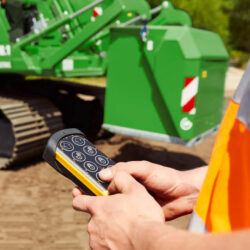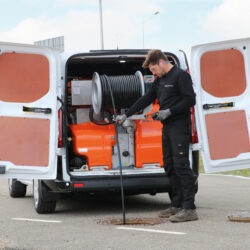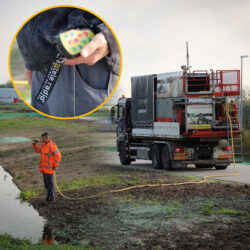The optimal frequency for safe and effective communication
Posted on July 11, 2023 at 10:04 am
Anyone who works with radio transmitters and receivers will eventually have to familiarize themselves with the concept of ‘frequencies’. What exactly are radio frequencies, how are they applied, which frequency should be chosen for specific situations, and how can we ensure secure communication?
What is a frequency?

Frequencies are the basis of wireless communication between equipment using sound waves. This technique is employed on land, at sea, and in the air. Sound waves are essentially vibrations, and the number of vibrations per second is referred to as “frequency.” For instance, a frequency of 433 MHz represents 433 million vibrations per second. Tele Radio utilizes frequencies for its industrial radio controls.
Which frequency should I choose?
Tele Radio uses a range of frequencies, such as 433, 869, or 915 MHz, and 2.4 GHz, for transmitter and receiver combinations. But how do you determine the best choice?
When selecting a frequency, three factors should be considered. Firstly, it is crucial to ascertain which frequencies are legally permitted in the region where you will be using the transmitter, as certain frequencies are restricted to specific applications like military or aviation. Secondly, it is important to assess the presence of potential interference from other wireless connections. Lastly, consider whether there are any physical obstructions like steel frames or walls that might disrupt or impede the wireless connection.
1. Which frequencies to use?
Radio frequencies are commonly regulated, and their permitted use can vary depending on the region of the world where the equipment is to be used. For instance, in Europe, 433 or 869 MHz frequencies are commonly used, while in American countries, 433 or 915 MHz frequencies are popular. If a manufacturer supplies machines worldwide, the more universal frequency of 2.4 GHz may be convenient.
As a general rule, high frequencies (treble) with shorter waveforms travel shorter distances and tend to reflect off walls quickly. Conversely, low frequencies (bass) with longer waveforms can travel greater distances and are more likely to penetrate walls or obstacles.
2. The best possible signal
Tele Radio systems incorporate various technologies to ensure the best possible signal quality. It is crucial to avoid interference from other wireless connections. The technology has been developed and secured to address this concern.
3. Avoiding or bypassing obstacles
Obstacles can potentially disrupt the wireless connection. This can be both frustrating and hazardous. Signal amplifiers, directional antennas, and other devices can be employed to overcome these challenges. Tele Radio offers a wide range of accessories to achieve optimal results for your specific situation.
Ensuring secure communication
Secure communication requires preventing unauthorized control of the receiver on your machine or device. All Tele Radio systems are designed with safety in mind. Even the simplest system includes a unique key in every transmitter, which is transmitted via our proprietary software using the chosen frequency. With this solution, we ensure that only the selected/intended receivers are controlled. Depending on the product range, a pin code can also be configured to prevent unauthorized individuals from operating the transmitter.
This level of security is of utmost importance in applications involving heavy lifting and hoisting, industrial operations like conveyor belts and rubble crushers, as well as gate and door control, excavators, dredgers, and various vehicles ranging from recovery vehicles to concrete mixers.



































 Tele Radio supports the world wide preservation of the Tiger with WWF.
Tele Radio supports the world wide preservation of the Tiger with WWF.